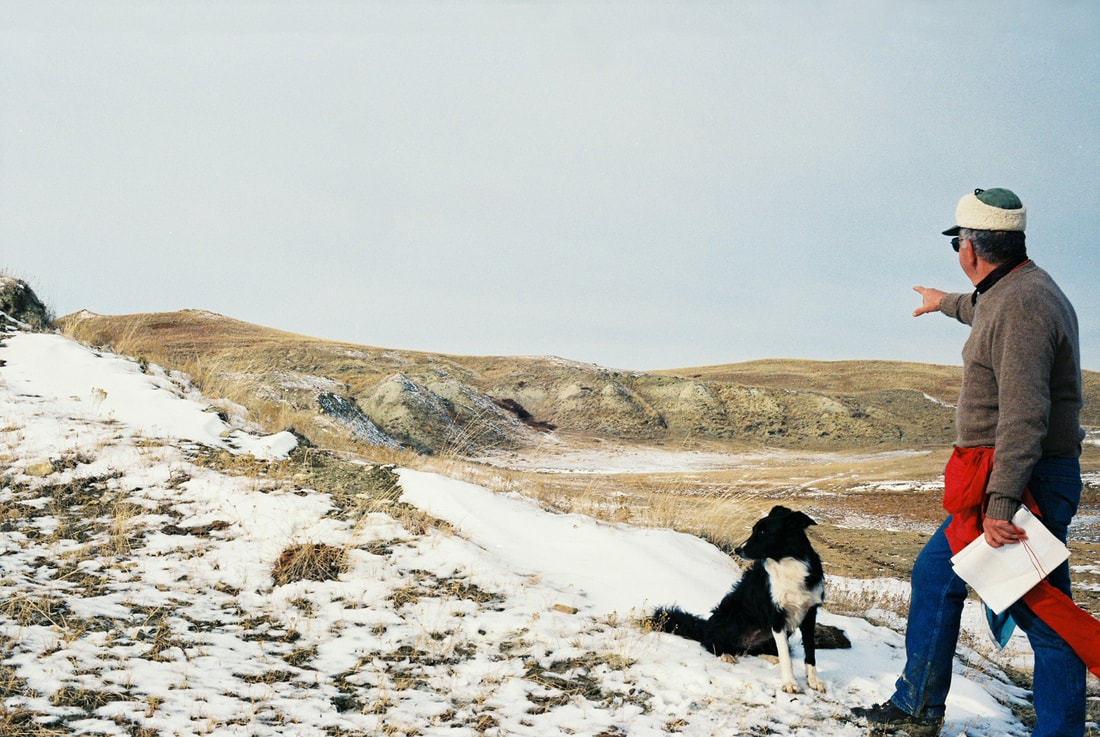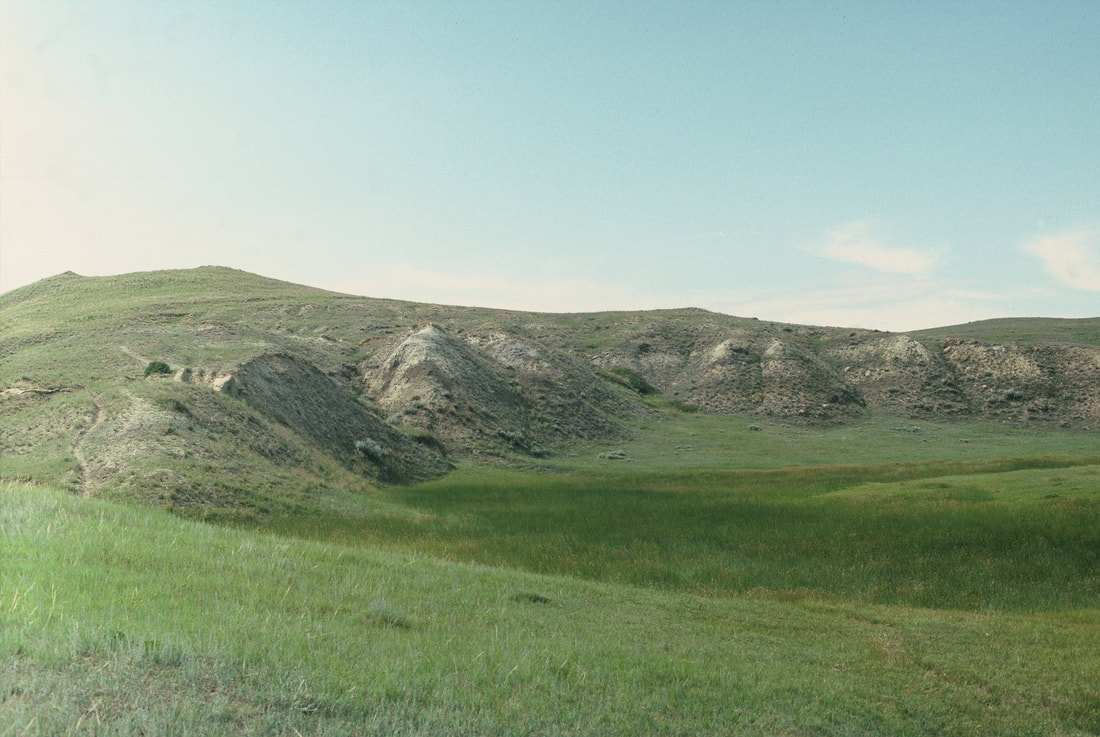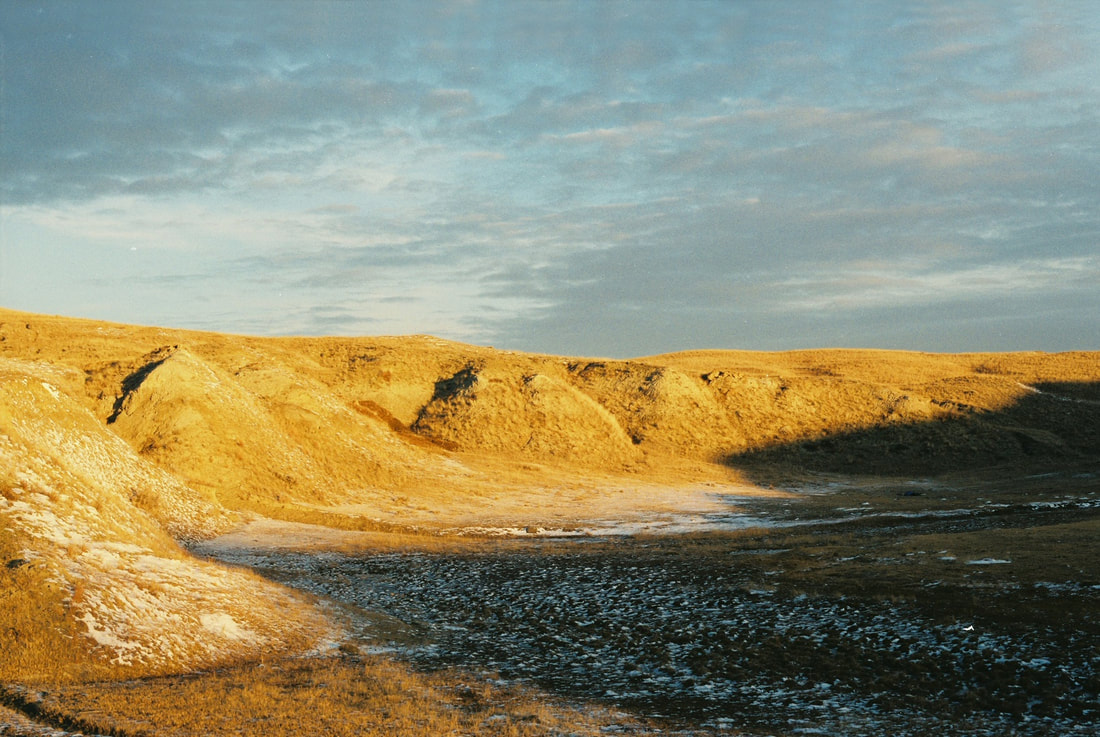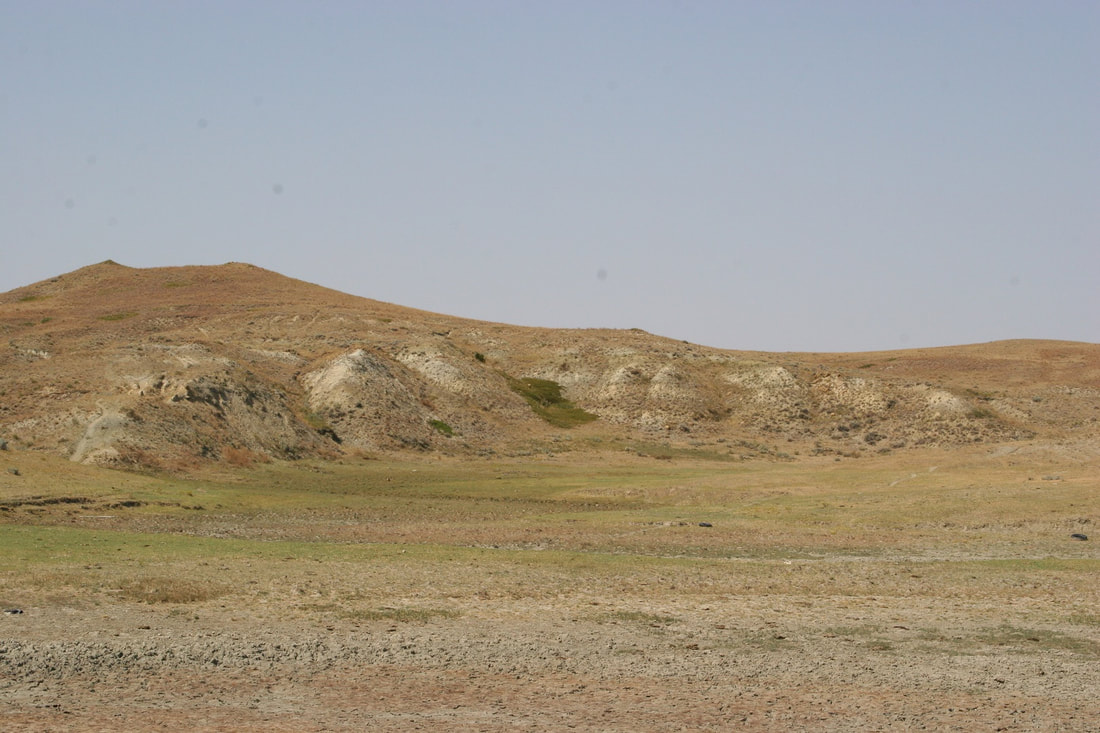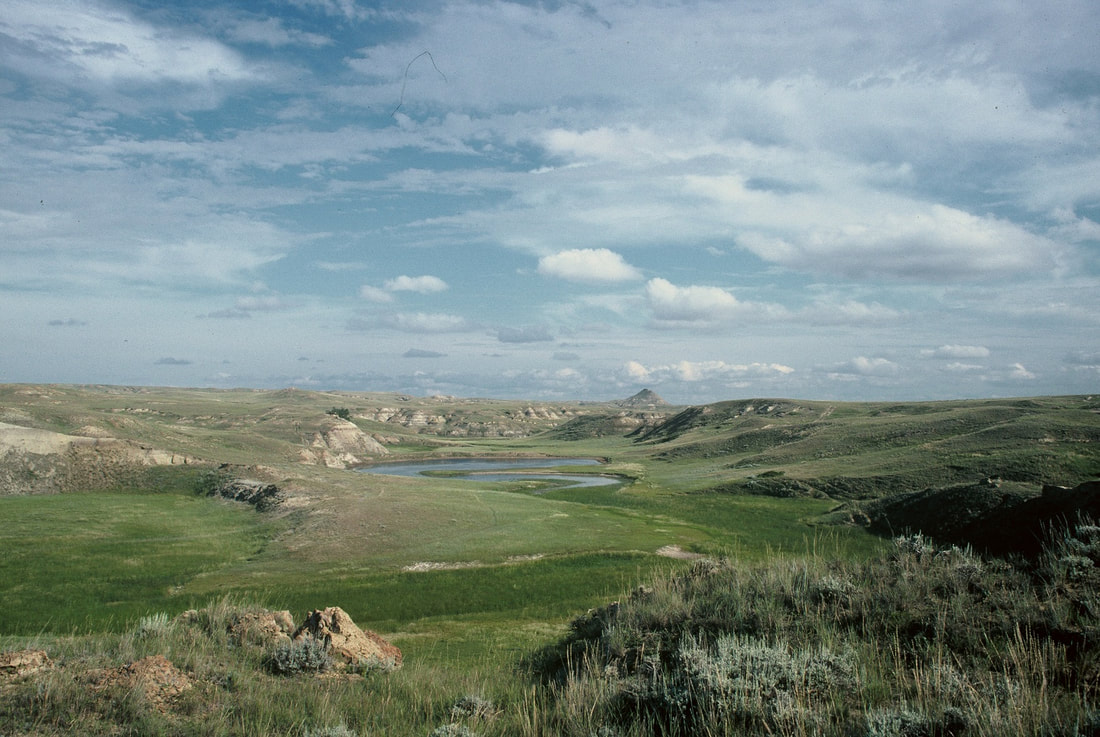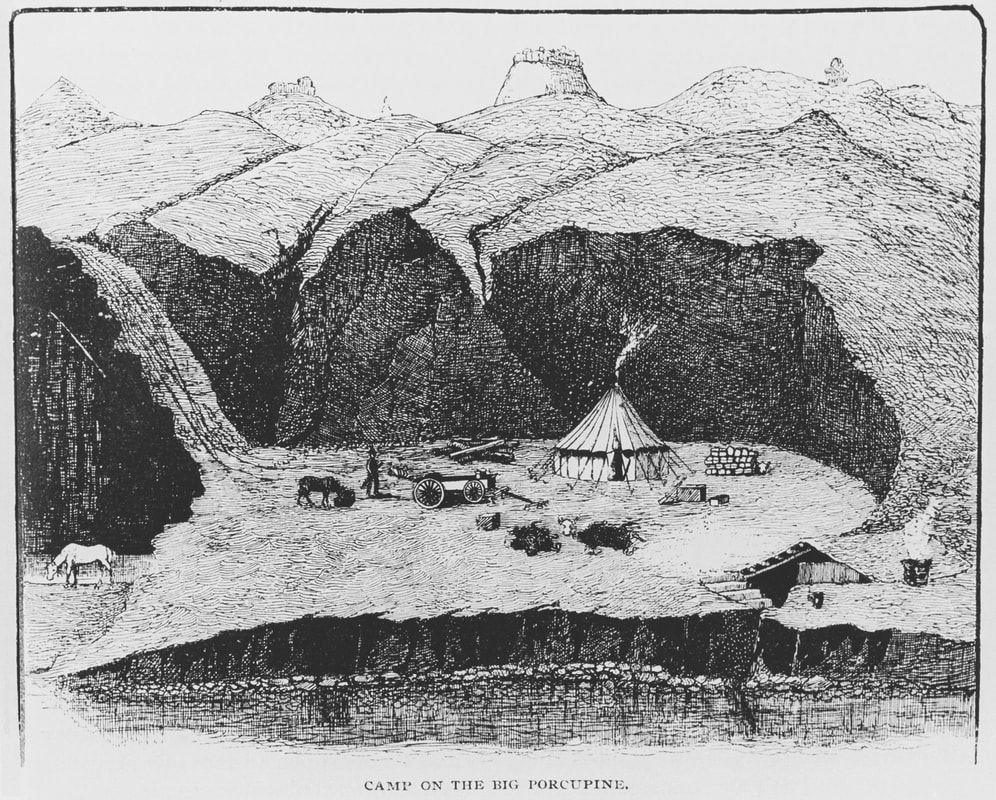CAMP ON THE BIG PORCUPINE
The Smithsonian Expedition For Buffalo
(excerpted from the book without endnotes)
|
In the fall of 1886, fulfillment of the Smithsonian Expedition’s “Hunt for Buffalo” was due in no small part to the chance discovery of a landscape feature which met the party’s every need. In remote outback of Montana Territory, where comforts are scarce in any season, the site’s surrounding bluff gave shelter from the elements during the late-fall/early-winter hunt. It also provided grass for the expedition’s 10 horses, and firewood for the six human members and their leader, William Hornaday. In the parched uplands of Montana’s Missouri-Yellowstone Divide, discovery of the site’s freshwater spring must have seemed a godsend.
That the camp could offer relative comforts of home, while doubling as field laboratory for preparing carcasses of bison and other species collected, literally brought success to the nation’s last hunt for buffalo in the wild. Among those taken were five of Hornaday’s six “finest” specimens-- all destined for the immortality of a museum exhibit, in the famed American Bison Group. In the exhaustive hunt for scattered remnants of once-mighty buffalo herds, the expedition’s riders were forced to scour an area of at least 1000 square miles, which Hornaday described as “…wild and rugged butte country…scored by intricate systems of great yawning ravines…steep-sided and very deep, and badlands of the worst description.” Against this backdrop, the main campsite afforded a virtual oasis -- perennial sanctuary for the hard-hunting team during much of its 12 weeks in the field. From the site, the weary men bid final farewell at hunt’s end, on December 13, never to return. |
With the expedition’s departure, the prairie oasis stood vacant once again -- lost to a century of droughts, blizzards, howling winds, and the vagaries of history and lore. Not until 103 years later -- in context with the search for Hornaday’s lost bison specimens -- was the old campsite again brought to light. On November 17, 1989, rediscovery was made, and the site’s authenticity verified, on June 13, 1990, by a team of archaeologists under Dr. Mark Baumler, of the Montana Historical Society.
Subsequent documentation and application brought eventual listing of the site -- now known as the Hornaday Camp -- on the National Register of Historic Places (access below). Today the site of Hornaday’s venerable encampment looks much the same as it did a century ago, if not quite so grand as Hornaday would later portray it, in glorious remembrance.
AUTHOR'S NOTE: Author's Photos, dates vary.
Subsequent documentation and application brought eventual listing of the site -- now known as the Hornaday Camp -- on the National Register of Historic Places (access below). Today the site of Hornaday’s venerable encampment looks much the same as it did a century ago, if not quite so grand as Hornaday would later portray it, in glorious remembrance.
AUTHOR'S NOTE: Author's Photos, dates vary.
HORNADAY CAMP, Garfield County, Montana
National Register of Historic Places, Site 24GF362
ONLINE ACCESS:
NATIONAL ARCHIVES CATALOG
Full Site Report, text and photos
https://catalog.archives.gov/id/71976032
NATIONAL PARK SERVICE
Full Site Report, text and photos
Site Report, text:
https://npgallery.nps.gov/NRHP/GetAsset/NRHP/91000298_text
Site Report, photos:
https://npgallery.nps.gov/NRHP/GetAsset/NRHP/91000298_photos
WIKIPEDIA PAGE
https://en.wikipedia.org/wiki/Hornaday_Camp
National Register of Historic Places, Site 24GF362
ONLINE ACCESS:
NATIONAL ARCHIVES CATALOG
Full Site Report, text and photos
https://catalog.archives.gov/id/71976032
NATIONAL PARK SERVICE
Full Site Report, text and photos
Site Report, text:
https://npgallery.nps.gov/NRHP/GetAsset/NRHP/91000298_text
Site Report, photos:
https://npgallery.nps.gov/NRHP/GetAsset/NRHP/91000298_photos
WIKIPEDIA PAGE
https://en.wikipedia.org/wiki/Hornaday_Camp


